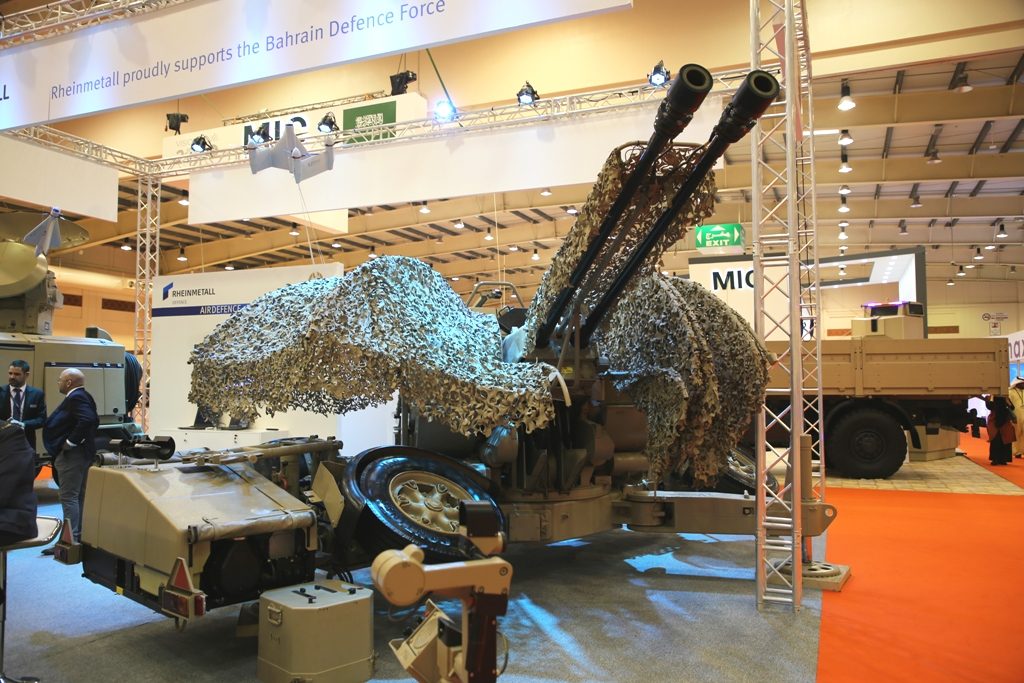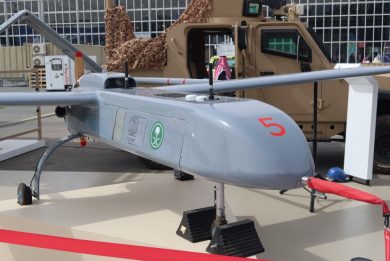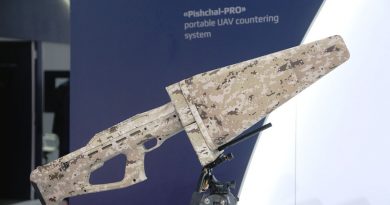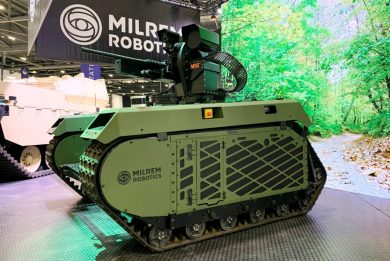
Upgrading existing Air Defence systems to counter UAVs, the Rheinmetall proposal
“I think we can consider the drone attack carried out on 14 September against the Saudi oil processing facilities and Abqaiq and Khurais as a game changer,” Fabian Ochsner, CEO at Rheinmetall Air Defence tells EDR On-Line in the company stand at BIDEC, where a 35 mm twin gun and a Skyguard fire control system are exhibited, both belonging to the Bahraini Defence Forces. Responsibility of the attack was claimed by the Houthi rebel movement that declared having used some ten UAVs launched from Yemen.
In April 2019 another attack managed to get through the layered air defence system deployed by Saudi Arabia, some of the systems position having remained the same for decades, allowing the opponents to analyse the layout and exploit weaknesses. “These events proved that it is time to upgrade the systems in use, transforming them in order to defeat the new threat,” Ochsner adds. Himself an air defender, Fabian Ochsner knows too well how much it is difficult remaining concentrated on the PPI of the system radar. Two elements led to the failure of the existing system against the new threat, according to Rheinmetall Air Defence CEO, the first being the fact that systems are not networked, the second being the lack of early warning. In the past scenarios, those with conventional forces deployed against each other, it was quite difficult to obtain the surprise effect, therefore higher readiness could be called when an attack was deemed more probable. The new threat that we must confront in hybrid scenarios must be dealt with 24/7, 365 days per year, and it is impossible to keep maximum alert levels for indefinite time. “What we need is to shift from operator-driven solutions to system-driven ones,” Ochsner adds, while underlining that when appropriate warning was available the 35 mm/Skyguard performed to expectations in Yemen. However there is a need for automating the process, and this can be done mostly by upgrading the existing software and by changing some of the computers currently in use in the Skyguard fire control system. “These are solutions that Rheinmetall Air Defence already has in its portfolio, as they are part of the Mantis C-RAM system adopted by the German Bundeswehr a few years ago,” Fabian Ochsner concludes. Solutions as those proposed by the Swiss branch of the German company should definitely be of interest not only of the Bahraini Defence Forces but also of other forces in the Gulf Region and in the Middle East at large, numerous services in the region being using the GDF-35/Skyguard solution in their AAA units.
Photo by P. Valpolini



